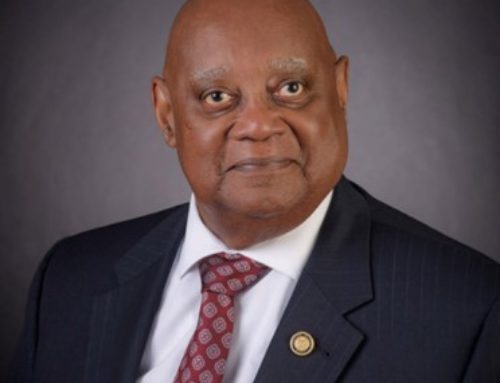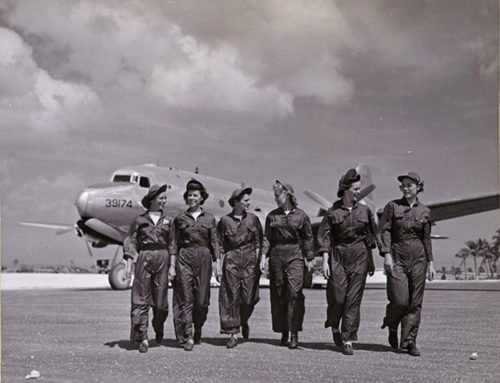Many World War II submarine stories focus on the daring heroism of intrepid commanding officers and their steadfast crews. But as LCDR Glenn Smith, USN (Ret.), demonstrates in his article “One Man, Six Commands at Sea: Captain Frederick Colby Lucas, Jr.,” not everyone was, or is, cut out for the stress of submarine life. What makes Lucas’s story so extraordinary is the fact that he recognized his own limitations and chose to refashion his naval career to play to his strengths. Today we offer the third of three parts of Smith’s article, which describes the aftermath of Lucas’s breakdown and how he dealt—seemingly successfully and honorably—with his disgrace, which was not revealed to the public until long after it happened.
“The occasion for Lucas’ return to submarine command came when USS Caiman (SS-323) was deployed on her first war patrol, and her commanding officer CDR John B. Azer was stricken with a serious illness, requiring Caiman to abort her patrol and return to Saipan. There, on 29 November 1944, CDR Frederick C. Lucas returned to submarine command. He completed Caiman’s first patrol in the same unproductive manner in which he commanded Billfish…no attacks, no results. The patrol ended 22 January 1944 at Fremantle. Mercifully, CDR Lucas returned ‘to the beach.’ From 1946 to 1948, he served at Puget Sound Naval Shipyard.
“In three submarine commands-at-sea, Frederick C. Lucas had well established that he was not cut out for submarine command. In 1948, he was offered a chance at redemption, and apparently took every advantage of it. His first surface command was to be the stores ship USS Graffias (AF-29), and he took her on supply missions throughout the Pacific.
“CAPT Lucas followed the apparently successful tour in Graffias with two major commands-at-sea. He assumed command of USS Shenandoah (AD-26) in 1952 and in his first year led her to a coveted Battle Efficiency Award. In February 1956, CAPT Frederick C. Lucas took command of what every surface Navy captain of his era wanted, a heavy cruiser, USS Los Angeles (CA-135). Lucas commanded her during Los Angeles’ stint patrolling the Formosa Strait during the Quemoy-Matsu crisis. In all of his surface commands, all indications are that he was well respected by his officers and men and did a commendable job, proving, it would seem, that even the best officers and men are not necessarily suited for the special rigors of submarine duty. And that they may well be able to serve with distinction elsewhere.
“CAPT Frederick Colby Lucas, Jr., [died] in February 2000 and is interred in Arlington National Cemetery.
“After commanding USS Queenfish (SS-393), LT (later CAPT) Charles Rush [the man who had borne witness to Lucas’s humiliation and requested he remove himself from command] had a distinguished naval career in staff and submarine development. For almost 60 years, he kept his word and did not tell the full story of what happened in the conning tower of Billfish on 11 November 1943. Eventually, the story leaked out from sailors who were there. Belatedly, Charles Rush was awarded the Navy Cross in February 2002. The award citation for CAPT Charles Rush’s Navy Cross tells the story as well as any author could:
“ ‘The President of the United States of America takes pleasure in presenting the Navy Cross to Captain [then Lieutenant] Charles W. Rush, United States Navy, for extraordinary heroism while serving as Chief Engineer and Diving Officer on board U.S.S. BILLFISH (SS-286), during a combat war patrol in the enemy controlled waters of Makassar Strait on 11 November 1943. When an extremely severe depth charge attack incapacitated the Captain and all officers senior to Captain Rush, with cool courage and outstanding professionalism he directed the damage control efforts directly responsible for saving the ship. The sustained accurate attacks caused major leaking through the stern tubes and various hull fittings and, it was later discovered, actually ruptured the pressure hull aft. Calling on his prior extensive combat experience, Captain Rush was able to maintain the submarine at 580 feet, almost 170 feet below her test depth, and prevent her sinking further to crush depth. During 12 straight exhaustive hours at his Diving Officer post, his calm demeanor, innovative damage control actions, and demonstrated courage in the face of perceived certain disaster served as a major inspiration to the crew to keep them functioning after most had given up all hope of survival. After finally being relieved by another officer, Captain Rush proceeded to the conning tower to assess the situation. He found the helm unmanned, the Captain and all senior officers still incapacitated, and no effective action being taken to counter the relentless depth charge attacks. Captain Rush, in a display of enlightened leadership, immediately assumed the conn, obtained a helmsman, and proceeded to direct evasive actions to elude the enemy above. Hearing the continuing explosions astern and reasoning that explosions close to the fuel ballast tanks had caused oil leaks that enabled the enemy ship to track the submarine’s path, he then performed an innovative maneuver which resulted in the submarine retracing its own path in the opposite direction to pass under the old oil slicks. This so confused the enemy that they lost contact with the BILLFISH, and Captain Rush was able to bring her to the surface after dark some four hours later, safely distant from the enemy now searching astern in a vain attempt to regain contact. He commenced recharging the depleted batteries with the single operable engine-generator, and as more machinery was repaired, he enhanced the propulsion capability and effected a successful escape from the scene. Captain Rush’s inspiring and exceptional performance of duty under the worst imaginable conditions and in the face of seemingly certain death were directly responsible for saving BILLFISH and all hands from loss and for restoring the shattered confidence of the crew. By his courageous actions, superb leadership, and loyal dedication to duty, Captain Rush reflected great credit upon himself and upheld the highest traditions of the United States Naval Service.’ ”
“At the same time, the Silver Star was awarded posthumously to EMC John Rendernick, and also commended was ENC Charley T. Odom, both for their heroic actions in saving Billfish in November 1943.”





